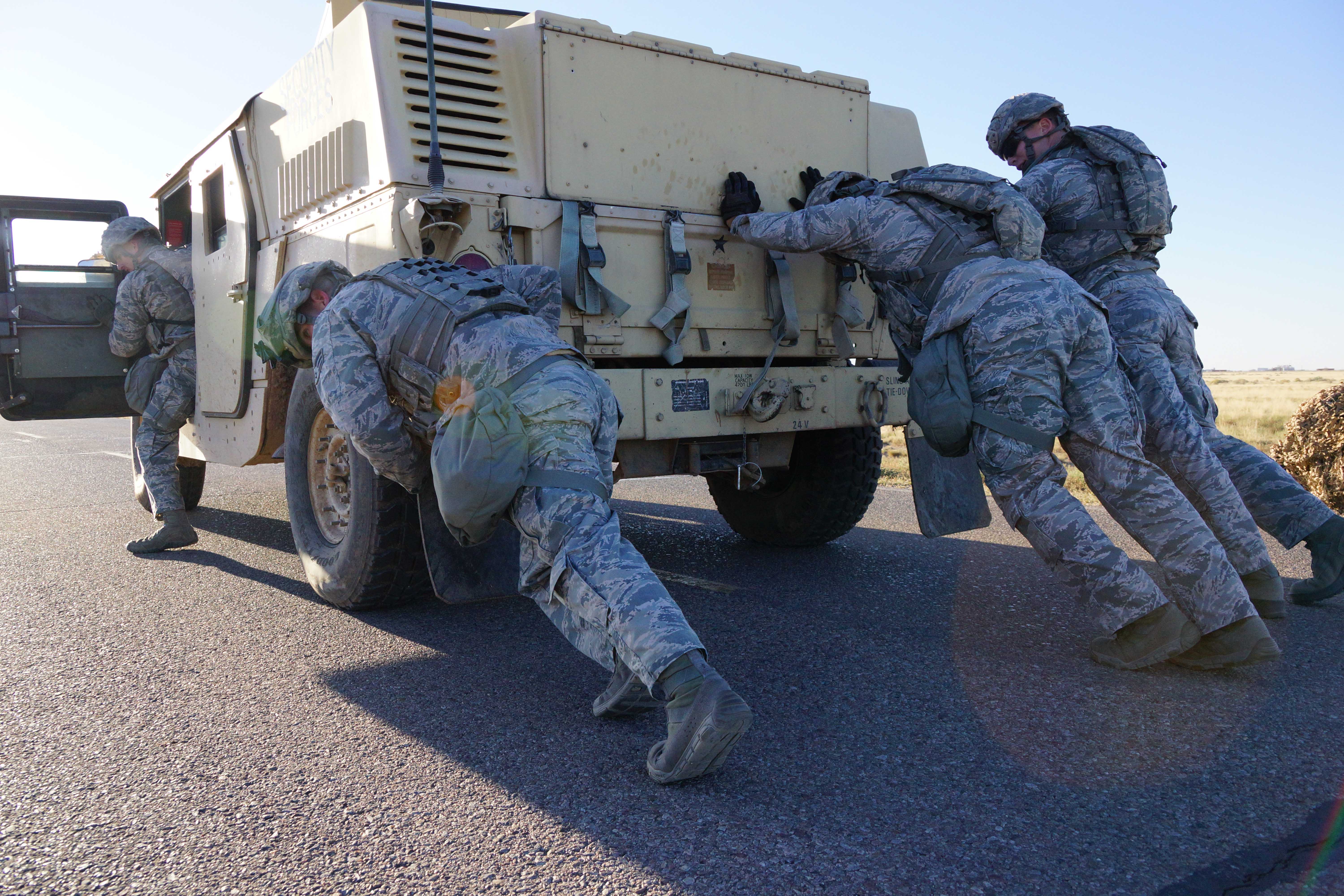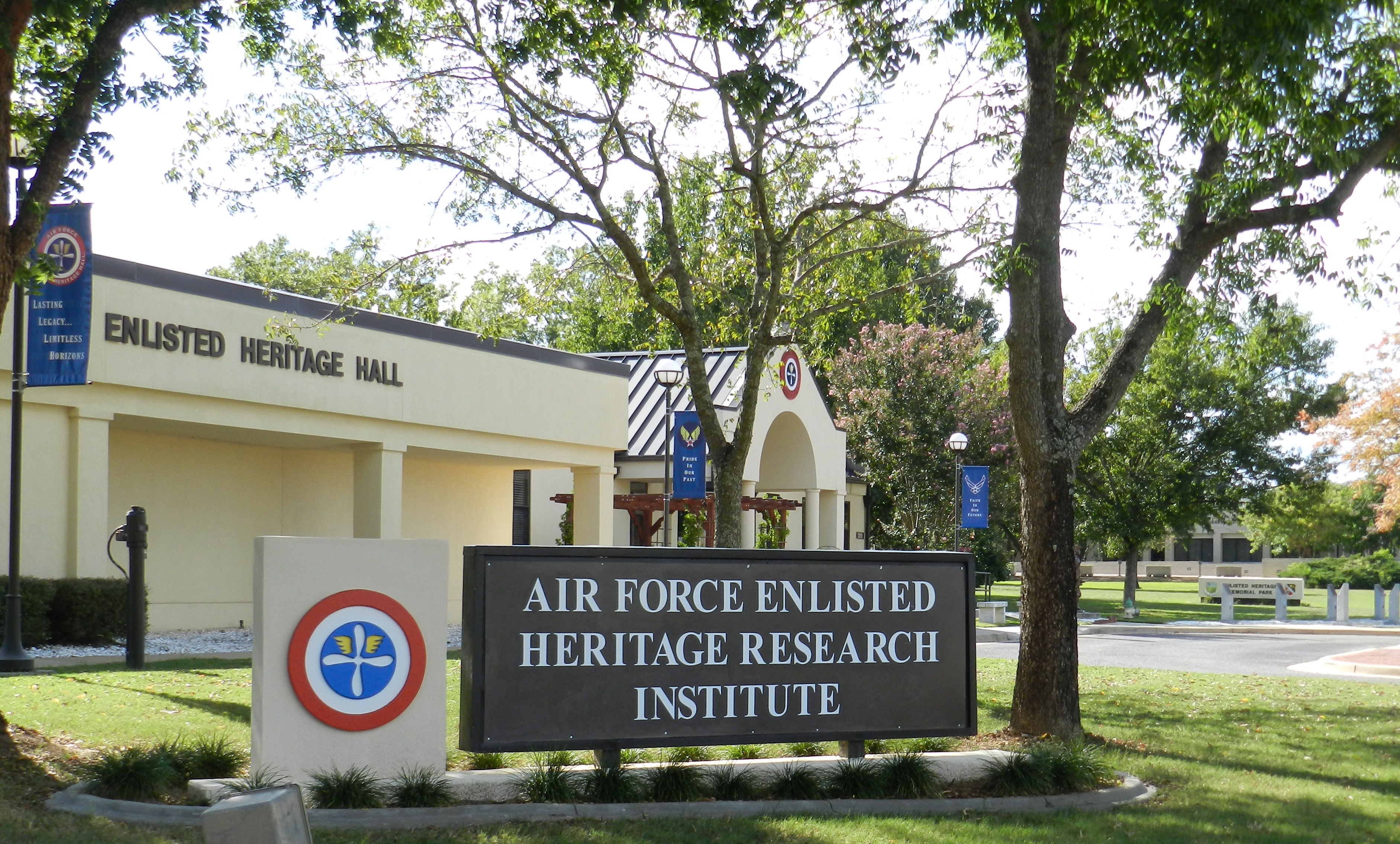
1st Annual Manzano Challenge, by Capt Roberto J. Cornier
On 22 October 2016, the 377th Security Forces Group, or 377 SFG, commanded by Col Dustin G. Sutton, hosted the 1st Annual Manzano Challenge at Kirtland Air Force Base, New Mexico. The all-star competition featured Security Forces Airmen from across the 377 SFG. 64 Defenders divided into 16 teams of 4 competed on 17 stations ranging from weapons skills, land navigation, team tactics, and problem solving.

The idea for a Kirtland Security Forces competition originated this past summer when SMSgt Eric E. Blanco, Operations Superintendent of the 377th Weapons System Security Squadron, or 377 WSSS was looking for ways to enhance the Security Forces culture and heritage among our Kirtland Defenders. “The idea of competing against other Defenders has always been very exciting to me,” said SMSgt Blanco. “Competing is part of our Culture, it’s in our DNA.”
Support for having a Security Forces competition within Kirtland AFB quickly grew among the squadrons. One of the biggest supporters, Lt Col James K. Meier, Commander of the 377 WSSS, swiftly drafted members of the 377 SFG leadership team to compete in the Manzano Challenge. “I remember competing in Defender Challenge as a young Captain, testing myself and my limits together with my team,” said Lt Col Meier. “It’s hard work, but it pays off.”

“We designed the Manzano Challenge to enhance team readiness, teamwork, unit pride, esprit-de-corps, and a competitive spirit among our Defenders,” said Col Sutton. “This is a benefit to our Defenders because they are able to tests their limits against a mentally and physically demanding environment.”
The last station, Team Punisher, collided teams against each other on a grueling 15 minute challenge requiring teams to carry a 300 pound log to a mud pit filled with water. At the mud pit, teams had to complete 5 repetitions of fire team push-ups before returning the log to the starting position. Each repetition alternated the use of the log with body carries to the mud pit.

With 62 competitors, the Manzano Challenge required over 70 volunteers and coordination with 21 base agencies, making the course safe for all participants. At the finish line, teams were welcomed to free food and drinks after completing over 8 hours of intense challenges and traveling nearly 10 miles since the start of the competition.
“This was extremely challenging for the team” said SSgt Antonio A. Pacheco, Team 14 Team Leader. “The course exploited our weaknesses as well as our strengths. There is no better way to build teamwork than this – it’s a challenge.”

The winners of the 1st Annual Manzano Challenge were: Top Fire Team and Team
Punisher Champions: SSgt Jorge Lopez, SrA Eddie Castro, and SrA Cody Taboada; Top Fire Team Leader: SrA James Ogg; and Top Fire Team Member: SrA Cody Taboada.
By Airman 1st Class Dennis Hoffman, 21st Space Wing Public Affairs / Published August 31, 2016

Lt. Col. Nicole Roberts, the 21st Security Forces Squadron commander, relies on a personable leadership style to effectively lead her 214 Airmen at Peterson Air Force Base, Colo. Roberts is affectionately known as “mama bear” around her squadron based on her reputation of always taking care of and protecting her troops. (U.S. Air Force photo/Airman 1st Class Dennis Hoffman)
Lt. Col. Nicole Roberts, the 21st Security Forces Squadron commander, relies on a personable leadership style to effectively lead her 214 Airmen at Peterson Air Force Base, Colo. Roberts is affectionately known as “mama bear” around her squadron based on her reputation of always taking care of and protecting her troops. (U.S. Air Force photo/Airman 1st Class Dennis Hoffman)
PETERSON AIR FORCE BASE, Colo. (AFNS) -- (This feature is part of the "Through Airmen's Eyes" series. These stories focus on individual Airmen, highlighting their Air Force story.)
Leadership is not an innate quality and there is no true recipe for success in regards to it. Leadership takes on many forms. Leadership has no preferred race, religion, ethnicity nor gender.
Blind to any categorization, Lt. Col. Nicole Roberts, the 21st Security Forces Squadron commander, accelerated through the enlisted and officer ranks while relying on a personable leadership style she still uses to effectively lead her 214 Airmen on Peterson Air Force Base.
“I have been in the service for 26 years with 11 being in the Army,” Roberts said. “I began as enlisted Army military police and then became a drill sergeant. Once I reached sergeant first class, I was selected for Officer Candidate School where I became an Army military police officer.”
Opportunities arose in Roberts’ career to progress both herself and her leadership and she took full advantage of them. She learned from her enlisted experience and her fellow brothers and sisters in arms and stored that knowledge knowing it would be beneficial to have as an officer, Roberts said.
Following a couple years of soaking up the experience as an officer, Roberts met her future husband. He was in the Air Force and she had heard great things of the Air Force so she decided to transfer between the two services.
“I did what is known as an interservice transfer,” Roberts said. “There was no break in service; one day I was in the Army and the next day I was in the Air Force. It took me awhile to handle the learning curve, but I have been lucky enough and blessed enough that in my entire experience in the Air Force. I have had some great leaders.”
Looking back, Roberts said transitioning to the Air Force was incredibly beneficial to her. She gained valuable mentorship and her leadership style, though already developed, became more refined.
“There is no magic to it,” Roberts said. “Being enlisted for a very long time, I have learned to put my Airmen first. I feel personally responsible for their welfare, safety and training. Their loved ones entrust with me their safety and I really take that to heart. My Airmen are my heartbeat, so I believe that if you love and care for your people, the mission will take care of itself.”
Roberts said that on her bad days, she heads to the gates to stand with, talk and check on her Airmen. She gets a revitalized sense of her duties and her responsibilities when she sees her defenders working long hours in the heat and cold with smiles on their faces.
“She really makes it a point to let you know she is there for you,” said Staff Sgt. Christopher Anderson, a member of the 21st SFS. “She is one of the most supportive leaders I have experienced in my six years of being in the Air Force. I have been at the gate and she will come up to me and take my scanner from me and make sure I am doing well. She is a mother figure to all of us in the squadron and we never want to do anything to disappoint her.”
It is with that style, Roberts led the 21st SFS to multiple awards in the Air Force Space Command medium-sized SFS category. Although she accepts the award, she is quick to give credit to her Airmen and her senior NCOs for leading the way. She said the success of the squadron is directly due to how well she and her team have worked together.
With her teams and her career field being predominantly male, Roberts’ leadership style has never succumbed to any negative criticism because of her gender.
“I have been in a male-dominated career field for so long that I overlook a lot of things in that regarding my gender,” Roberts said. “In all honesty, I think the only time my gender really defines me is that my troops call me ‘mama bear’ because my troops know that if anyone messes with them, I’ll break out the claws and have their back.”
Leaving nothing to excuses, Roberts said she embraces herself and her gender but believes that when she dons her sage-green Airman battle uniform, she is like any other Airman and fights the same fight.
“As a female, I have seen other females who are pilots, cops and firemen – I have seen some phenomenal females in action,” she said. “I have always believed that if you work hard and take care of your people, you will get every opportunity that you are supposed to get and the Air Force has done a great job at leveling the playing field for everyone. Ever since I’ve been blue, I’ve been blessed.”
EHRI at Maxwell-Gunter AFB AL to honor A1C Elizabeth Jacobson
The Enlisted heritage Research Institute, Enlisted Heritage Hall at Gunter Annex, in Montgomery, Alabama wishes to honor A1C Elizabeth Jacobson with a dedicated display at the Air Force's only Museum dedicated solely to preserving our Enlisted Heritage. Together with her family, friends, and fellow Security Forces members, we will unveil her display in the Operation Iraqi Freedom wing of the museum in 2017.
We humbly call upon you to help us make this wonderful tribute a reality. Our goal is to raise $8,000-$10,000 to honor her life and legacy with a life-size likeness of Elizabeth, artifacts, photos, and paintings of her brave service.
Donations from this "go fund me" site https://www.gofundme.com/pxyucar8 will go directly to the Air University Foundation. The Air University Foundation is a non-profit organization and all donations received on this page will be earmarked for A1C Elizabeth Jacobson's dedicated display at the Air Force Enlisted Heritage Hall.
We sincerely appreciate any donations you can give to support our efforts. If you would like to share photos, or memories of Elizabeth, please contact us via message or facebook (links below):
(Click to view previous displays honoring our Enlisted Airmen)
This display is going to the first of many that will highlight our Airman's historical events from around the globe. The POC is Erin Panas (This email address is being protected from spambots. You need JavaScript enabled to view it. or (334) 676-0249) for this effort.
2016 USAF Airmen of the Year
Spotlight: SMSgt. Rebecca McNelley
Air Force Magazine, Daily Report, 13 September 2016

SMSgt. Rebecca McNelley, standardization and evaluation superintendent with the 90th Security Forces Group at F.E. Warren AFB, WY. Air Force photo.
SMSgt. Rebecca McNelley, standardization and evaluation superintendent with the 90th Security Forces Group at F.E. Warren AFB, Wyo., is one of the Air Force's 12 Outstanding Airmen of the Year for 2016. McNelley pioneered the 90th Missile Wing's first active-shooter exercise by partnering with the Wyoming Air National Guard and Army National Guard, preparing more than 8,000 personnel to avert such threats. She directed more than 1,000 evaluations and assessments for four squadrons, reducing the number of defenders posted in missile fields by 10 percent. McNelley engineered weekly missile field and weapons storage team visits, covering three squadrons and 17 flights, ensuring 1,200 security forces airmen were nuclear-security ready. She was proactive in the community, managing the Air Force's largest Airman's Attic program and overseeing her wing's loan locker, assisting more than 3,000 families Air Force families.
Congratulations SF CSB Candidates!

Defenders - Congratulations on your selection as command candidates for Wing and Group Command. This is a significant milestone in your careers and is a reflection of your proven leadership and demonstrated potential to take on increased responsibilities. With (4) Wing Command and (14) Group Command candidates on the slate, we continue to compete exceptionally well for senior leader positions, which is a direct result of your superior performance as leaders within our Service and across the Joint force. Please thank your families for the role they've played in supporting your service as an Airman, take time to celebrate this achievement, and thank the Airmen serving with and for you for being great teammates. Well done!
Col Gregory Anderson Air Base Wing
Col Brian Greenroad Air Base Wing
Col Jonpaul Mickle Air Base Wing
Col Thomas Sherman Air Base Wing
Lt Col Jason Beck Mission Support Group
Col Matthew Boschert Mission Support Group
Col Ted Breuker Mission Support Group
Lt Col Christopher Bromen Mission Support Group
Col Christopher Callis Mission Support Group
Lt Col Jeffrey Carter Mission Support Group
Lt Col Christopher Deguelle Mission Support Group
Lt Col John Grimm Mission Support Group
Col Aaron Guill Mission Support Group
Col Steven Heffington Mission Support Group
Lt Col Philip Holmes Mission Support Group
Col Don Layne Mission Support Group
Lt Col Leonard Rose Mission Support Group
Col David Williams Mission Support Group
Defensor Fortis,
ANDREA D. TULLOS, Brig Gen, USAF
Director of Security Forces
DCS/Logistics, Engineering & Force Protection
Page 43 of 50



